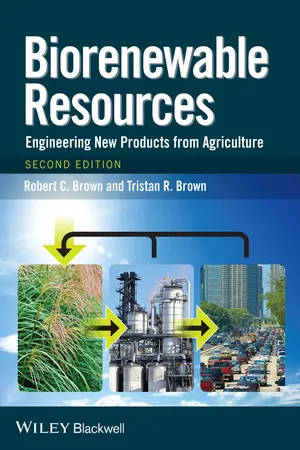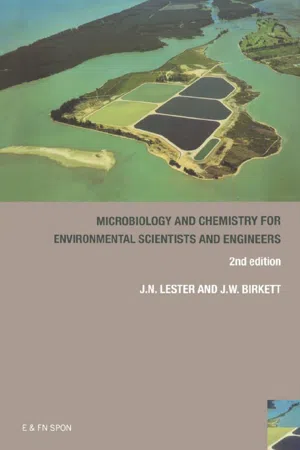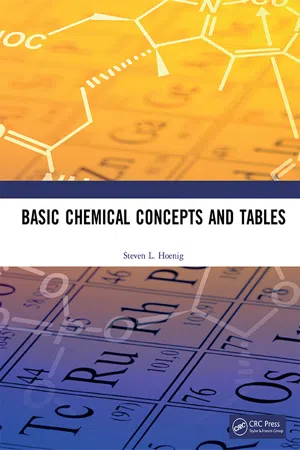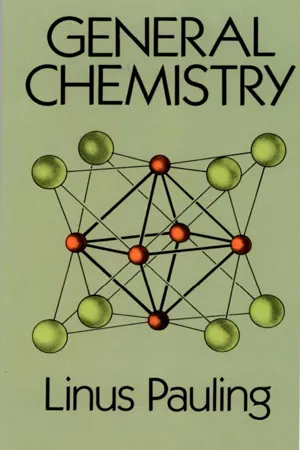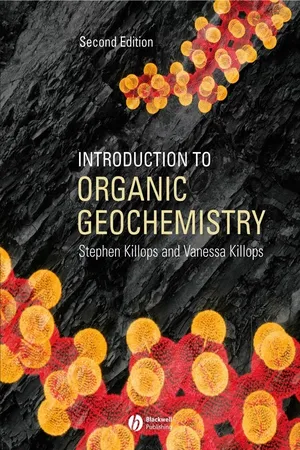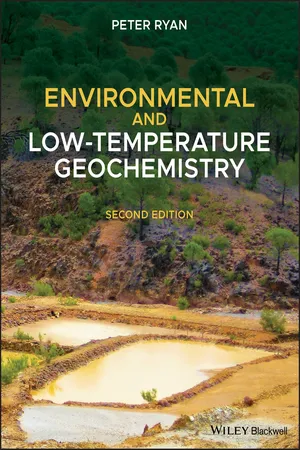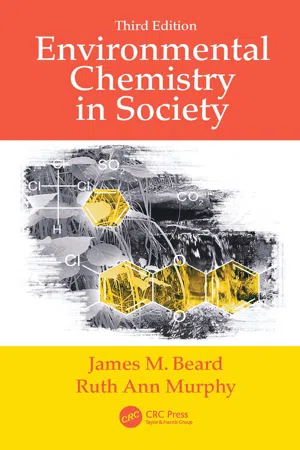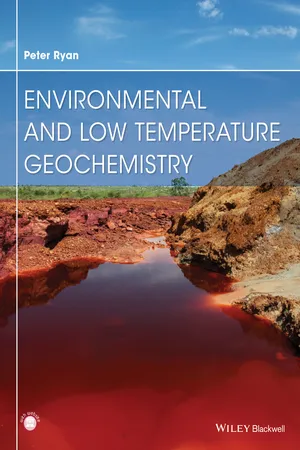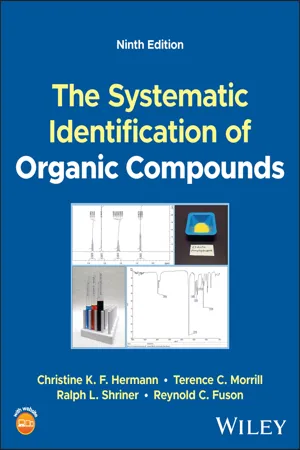Chemistry
Types of Organic Compounds
Organic compounds are classified into several types based on their functional groups and structures. Some common types include alkanes, alkenes, alkynes, alcohols, ethers, aldehydes, ketones, carboxylic acids, esters, and amines. Each type has distinct properties and reactivity, making them important in various chemical reactions and biological processes.
Written by Perlego with AI-assistance
Related key terms
11 Key excerpts on "Types of Organic Compounds"
- eBook - ePub
Biorenewable Resources
Engineering New Products from Agriculture
- Robert C. Brown, Tristan R. Brown(Authors)
- 2013(Publication Date)
- Wiley-Blackwell(Publisher)
CHAPTER 3 Organic Chemistry 3.1 IntroductionOrganic chemistry provides the foundation for understanding the transformation of plant materials into biofuels and biobased products. This chapter provides an overview to the subject for readers who are not familiar with the topic or require a brief review. More detailed descriptions can be found in the references at the end of this chapter.The original distinction between inorganic and organic compounds was their source in nature. Inorganic compounds were derived from mineral sources, whereas organic compounds were obtained from plants or animals. Advances in chemical synthesis since the eighteenth century have made obsolete these definitions: the vast majority of organic chemicals commercially produced today are made from petroleum. The common feature of organic compounds is a skeleton of carbon atoms that include lesser amounts of other atoms, especially hydrogen, oxygen, and nitrogen, but also sulfur, phosphorus, and halides.The high chemical valence of carbon allows for complex structures and large numbers of organic compounds. These include compounds consisting of chains of carbon atoms, referred to as acyclic or aliphatic compounds, and compounds containing rings of carbon atoms, known as carbocyclic or simply cyclic compounds. Some of these rings contain at least one atom that is not carbon (known as heteroatoms). These compounds are called heterocyclic compounds. Carbocyclic compounds are further classified as either aromatic compounds, in which electrons are shared among atoms to produce a particularly stable ring, or alicyclic compounds, which includes all non-aromatic cyclic compounds.3.2 Classification of ReactionsA variety of reactions can occur among organic compounds. Addition reactions occur when two reactants combine to give a single product. Elimination reactions involve the splitting of a single compound into two compounds. Most elimination reactions form a product with a double bond containing the majority of the atoms found in the reactant. Substitution reactions involve replacement of one atom or group of atoms by a second atom or group of atoms. Hydrolysis is a particularly important instance of substitution reactions involving the action of water in splitting a large reactant molecule into two smaller product molecules. One product molecule is bonded to the hydrogen atom from the water, while the other product molecule is bonded to the hydroxyl group derived from the water. Condensation reactions involve two reactants combining to form one larger product with the simultaneous formation of a second, smaller product. Dehydration is a particularly important instance of condensation reactions in which water is the second, smaller product. Note that dehydration is the opposite of hydrolysis. Rearrangement - Jason Birkett, John Lester(Authors)
- 2018(Publication Date)
- CRC Press(Publisher)
Chapter 7Organic chemistry
7.1 Introduction
Organic chemistry is the chemistry of carbon and its compounds. Living systems form organic molecules and as such they are therefore essential to life. Proteins, nucleic acids, carbohydrates and fats are all organic compounds (i.e. the principal component is carbon).Carbon-containing compounds were originally termed “organic” because it was thought that they could only be produced by living plants and animals. However, in 1828 Freidrich Wöhler converted lead cyanate (an inorganic compound) into urea (an organic compound) by treating it with aqueous ammonia.Since this discovery, more than six million organic compounds have been synthesized. These range from molecules such as penicillin to artificial sweeteners like saccharin.Organic chemists are generally concerned with the various pathways involved in synthesizing organic compounds and improving the yield of the final product. Environmental chemists and engineers wish to know about the degradation of organic chemicals and how they will interact with all the environmental compartments (i.e. air, water and land). In order to achieve this, one must have a fundamental knowledge of organic chemistry. This chapter discusses these fundamental aspects and the various classes of organic compounds.7.2 The carbon atom
Carbon can form a vast amount of compounds. This is partly due to the fact that a carbon atom contains four electrons in its outer shell and can thus form four single covalent bonds by sharing with four electrons from other atoms. Therefore, the carbon atom will attain a stable electronic configuration (i.e. eight electrons in the outer shell). Carbon can also form covalent bonds with other carbon atoms, a property which is essentially unique to carbon (although silicon also exhibits this). This can result in carbon chains of enormous length and variation. Some examples of this are shown in Fig. 7.1 .Fig. 7.1 Different arrangements of carbon chains.- eBook - ePub
Water Quality Data
Analysis and Interpretation
- Arthur Hounslow(Author)
- 2018(Publication Date)
- CRC Press(Publisher)
CHAPTER 7Organic Chemistry NomenclatureIntroduction
Organic compounds are composed primarily of variable numbers of carbon and hydrogen atoms, usually with smaller numbers of oxygen, nitrogen, sulfur, phosphorus, and halogen atoms—chlorine, fluorine, and bromine. Other elements may be incorporated in organic compounds to form organometallic compounds, but those will not be discussed here. Although specific references are generally not practical in this chapter, the text “Nomenclature of Organic Compounds” by Fletcher et al. (1974) was relied on extensively when nomenclature problems arose.The carbon atoms are joined to one another as chains, branched structures, or in rings. The carbon-carbon bonds may be single (sharing one electron pair), double (sharing two electron pairs), or triple (sharing three electron pairs). The most important ring structure, benzene, is one that consists of six carbon atoms and six hydrogen atoms in a planar ring. If a noncarbon atom replaces a carbon in a ring structure, the compound is called a heterocyclic compound. Most of the variation among organic compounds is caused by special groups of organic atoms attaching to the carbon atoms. They are called functional groups and contain at least one noncarbon atom. It is the presence of these groups that give organic compounds their unique properties. Organic compounds containing only carbon and hydrogen are called hydrocarbons. If they contain one or more halogen atoms they are called halogenated hydrocarbons. They may be divided into two groups, depending on whether the benzene ring is present or not. These are listed in Table 7.1 .Early Organic Chemistry
The term organic chemistry was originally used to designate those substances of plant and animal origin thought to be more closely related to one another than to subsiances of mineral origin. It was known that organic substances form CO2 and H2 - Albert S. Tarendash(Author)
- 2021(Publication Date)
- Barrons Educational Services(Publisher)
page 319 )- 11.4
Concept: Isomers of organic compounds have the same molecular formula but different structures and properties. (Pages 313–314 )- 11.5
Concept: Types of organic reactions include: (a) addition (Page 325 ); (b) substitution (Page 324 ); (c) polymerization (Page 327 ); (d) esterification (Pages 325–326 ); (e) fermentation (Page 325 ); (f) saponification (Page 326 ); (g) combustion (Page 326 ). Skills: • Identify types of organic reactions. (Pages 324–327 ) • Given a balanced equation for an organic reaction, determine a missing reactant or product. (Pages 324–327 )Passage contains an image
11.1 Organic Chemistry Is . . . ?
Organic chemistry is essentially the study of carbon and its compounds. Why do we devote an entire chapter to just one element? The answer lies in the fact that the properties of organic compounds and the reactions that they undergo are generally quite different from those of their inorganic counterparts. Organic chemistry is responsible for many of the modern materials we use, and it is the basis of the chemistry of life.In organic chemistry, the structure of a molecule is important in determining its properties and reactivity. While the number of inorganic compounds is in the order of tens of thousands, the number of organic compounds is in the order of millions. The main reason for the existence of so many organic compounds is the ability of carbon atoms to bond with other carbon atoms- eBook - ePub
- Steven L. Hoenig(Author)
- 2019(Publication Date)
- CRC Press(Publisher)
33.1 Classification of Organic Compounds 3.2 Alkanes 3.3 Alkenes 3.4 Dienes 3.5 Alkynes 3.6 Benzene 3.7 Alkylbenzenes 3.8 Alkenylbenzenes 3.9 Alkyl Halides 3.10 Aryl Halides 3.11 Alcohols 3.12 Phenols 3.13 Ethers 3.14 Epoxides 3.15 Aldehydes and Ketones 3.16 Carboxylic Acids 3.17 Acyl Chlorides 3.18 Acid Anhydrides 3.19 Esters 3.20 Amides 3.21 Amines 3.22 Alicyclic Compounds 3.23 Heterocyclic Compounds 3.24 Isomers 3.25 Polymer Structures3.1 CLASSIFICATION OF ORGANIC COMPOUNDS3.1.1 GENERAL CLASSIFICATION
FIGURE 3.1 General Classification of Organic Compounds3.1.2 CLASSIFICATION BY FUNCTIONAL GROUP
TABLE 3.1 Organic Functional Groups3.2 ALKANES3.2.1 PREPARATION OF ALKANES
3.2.1.1 WURTZ REACTION
3.2.1.2 GRIGNARD REDUCTION
3.2.1.3 REDUCTION
3.2.1.4 KOLBE REACTION
3.2.1.5 HYDROGENATION
3.2.2 REACTIONS OF ALKANES
3.2.2.1 COMBUSTION
3.2.2.2 HALOGENATION
Reactivity X: Cl2 > Br2H: 3°>2°>1°> CH3 -H3.2.2.3 FREE RADICAL SUBSTITUTION
3.3 ALKENES3.3.1 PREPARATION OF ALKENES
3.3.1.1 DEHYDROHALOGENATION OF ALKYL HALIDES
Ease of dehydrohalogenation 3°>2°>1°>3.3.1.2 DEHALOGENATION OF VICINAL DIHALIDES
3.3.1.3 DEHYDRATION OF ALCOHOLS
3.3.1.4 REDUCTION OF ALKYNES
3.3.2 REACTIONS OF ALKENES
3.3.2.1 HYDROGENATION
3.3.2.2 HALOGENATION
X2 = Cl2 , Br23.3.2.3 ADDITION OF HYDROGEN HALIDE
HX = HCl, HBr, HIMarkovnikov’s rule : The hydrogen of the acid attaches itself to the carbon atom which has the greatest number of hydrogens, Markovnikov’s addition . In the presence of peroxide, HBr will undergo anti-Markovnikov addition - eBook - ePub
- Linus Pauling(Author)
- 2014(Publication Date)
- Dover Publications(Publisher)
23 Organic Chemistry 23-1. The Nature and Extent of Organic Chemistry Organic chemistry is the chemistry of the compounds of carbon. It is a very great subject—over a million different organic compounds have already been reported and described in the chemical literature. Many of these substances have been isolated from living matter, and many more have been synthesized by chemists in the laboratory. The occurrence in nature, methods of preparation, composition, structure, properties, and uses of some organic compounds (hydrocarbons, alcohols, chlorine derivatives of hydrocarbons, and organic acids) were discussed in Chapter 7. This discussion is continued in the following sections, with emphasis on natural products, especially the valuable substances obtained from plants, and on synthetic substances useful to man. Several large parts of organic chemistry will not be discussed at all; these include the methods of isolation and purification of naturally occurring compounds, the methods of analysis and determination of structure, and the methods of synthesis used in organic chemistry, except to the extent that they have been described in Chapter 7. There are two principal ways in which organic chemists work. One of these ways is to begin the investigation of some natural material, such as a plant, that is known to have special properties. This plant might, for example, have been found by the natives of a tropical region to be beneficial in the treatment of malaria. The chemist then proceeds to make an extract from the plant, with use of a solvent such as alcohol or ether, and, by various methods of separation, to divide the extract into fractions. After each fractionation a study is made to see which fraction still contains the active substance. Finally this process may be carried so far that a pure crystalline active substance is obtained - eBook - ePub
- Stephen D. Killops, Vanessa J. Killops(Authors)
- 2013(Publication Date)
- Wiley-Blackwell(Publisher)
Table 2.1 .Table 2.1Geochemically important functional groups
*R is used to represent aliphatic chains (alkyl groups) or aromatic rings. The latter can also be called aryl groups, and are sometimes represented by Ar.formula* group/compound name R–OH hydroxyl: alcohol (R = alkyl group) phenol (R = phenyl group) carbonyl: aldehyde (R = H) ketone (R = alkyl or phenyl) carboxyl: carboxylic acid (R = H) ester (R = alkyl group) —O— ether —NH2 amine amide —SH thiol (or mercaptan) —S— sulphide alkene More than one type of functional group may be present in a molecule, as in amino acids, which contain both carboxylic acid and amino groups. Similarly, amides can be considered to comprise amino and carbonyl groups, and carboxylic acids to comprise carbonyl and hydroxyl groups, although the behaviour of each group is modified by the neighbouring group. The double bond of an alkene can also be thought of as a functional group.Heteroatoms can be incorporated into cyclic systems, and some of the geochemically important are shown in Table 2.2 .Table 2.2Geochemically important cyclic unitsformula unit name quinones (1, 2 and 1, 4) (i.e. 2 carbonyl groups within a cyclic system) - eBook - ePub
- Peter Ryan(Author)
- 2019(Publication Date)
- Wiley-Blackwell(Publisher)
3 Organic Compounds in the EnvironmentTwo main areas of concern provide the impetus for understanding the role of organic biogeochemistry in environmental science. The first is the fate, transport, and degradation of synthetic organic contaminants in soils, surface waters, aquifers, and the atmosphere. These synthetic compounds are typically petroleum‐based fuels, solvents, pesticides, industrial chemicals, and pharmaceuticals. The second involves origin and behavior in the environment of a wide array of natural organic compounds including (but not limited to) humic and fulvic substances; methane and other nonindustrial hydrocarbons (from deep crustal and mantle origins to atmospheric reactions); dimethyl sulfide and other natural marine carbon‐sulfur compounds; amino acids in sedimentary rocks; and charcoal produced during forest fires. It is an interdisciplinary field including contributions from geology, soil science, biogeochemistry, environmental geochemistry, hydrogeology, limnology, oceanography, and atmospheric chemistry, among others. At its most fundamental level, organic biogeochemistry is concerned with carbon‐based compounds studied in organic chemistry classes, so the first part of this chapter focuses on selected concepts from the field of organic chemistry, including the structures and compositions of some compounds that are environmental contaminants.3.1 Introduction to Organic Chemistry: Chains and Rings, Single, Double, and Triple Bonds, Functional Groups, Classes of Organic Compounds, Organic Nomenclature
3.1.1 Definition of organic compounds
Chains or rings of carbon atoms are the fundamental units of organic compounds. Hydrogen is the element that most commonly bonds with the C chains or rings, but it is not uncommon for organic compounds to also contain, nitrogen, oxygen, sulfur, chlorine, phosphorus, and less commonly silicon, iron, trace metals, or other elements. For reasons based on historical classification and their often‐inorganic origins, there are a few carbon‐based compounds that are considered “inorganic carbon,” including the carbonate minerals (e.g. calcite, dolomite), bicarbonate and carbonate anions (HCO3 − and CO3 2− - eBook - ePub
- James M. Beard, Ruth Ann Murphy(Authors)
- 2021(Publication Date)
- CRC Press(Publisher)
organic chemistry , involves a huge number of compounds and is related to everything from living organisms to medicines to plastics to paper to paint, and so on. But, how can one element be responsible for so many compounds? Carbon has the unique ability to bond to itself to form chains of indefinite length. In addition, given that carbon has a valence of four, it can not only make chains but also produce branches to the chain.As one might be able to imagine, an incredible number of compounds can be made from only carbon and hydrogen. For example, using only 20 carbon and 42 hydrogen atoms, one can theoretically come up with 366,319 different compounds.4.4.1 Formulas and Structural Drawings in Organic Chemistry
The preceding drawing is an example of a structural formula . This drawing shows exactly which atoms are bonded to each other and the exact order of this bonding. Such drawings are very clear in describing the structure of the molecule at hand; however, they are very laborious to draw. As a result, organic chemists over the years have come up with simplified ways of drawing organic compounds. One way involves the grouping of carbon and hydrogen atoms that are attached to each other to give rise to what are known as condensed structural formulas . The compound whose structural formula is given earlier would appear as follows when drawn as a condensed structural formulaTo take the simplification process one step further, chemists have developed what are known as line-bond formulas . In these drawings, many of the carbon atoms are shown simply as bends in a line (or in some cases as the end of a line), and many of the hydrogen atoms are omitted. The formula that has been considered would appear as follows in a line-bond drawing.4.4.2 Hydrocarbons
The compound that has been considered is an example of a hydrocarbon , a compound containing only carbon and hydrogen. This compound is also an example of a group of compounds known as alkanes. Alkanes are organic compounds containing only carbon, hydrogen, and single bonds. A single bond is the typical covalent bond created by sharing one pair of electrons between two atoms. The simplest example of an alkane is methane (CH4 ). Methane is the principal component of natural gas and is one of the final products of the breakdown of biological material in the absence of oxygen. If we consider a two-carbon molecule, we have ethane (CH3 CH3 ), a gas that can be obtained from natural gas and petroleum, both of which are energy sources discussed in Chapter 7 . The organic alkane with three carbons is propane (CH3 CH2 CH3 - eBook - ePub
- Peter Ryan(Author)
- 2014(Publication Date)
- Wiley-Blackwell(Publisher)
3 Organic Compounds in the Environment3.1 Introduction to Organic Chemistry: Chains and Rings, Single, Double, and Triple Bonds, Functional Groups, Classes of Organic Compounds, Organic Nomenclature
Organic geochemistry applies to two important issues in environmental science. The first is the fate, transport, and degradation of synthetic organic contaminants in soils, surface waters, aquifers and the atmosphere. These synthetic compounds are typically petroleum-based fuels, solvents, pesticides and pharmaceuticals. The second involves understanding the origins and behaviors in the environment of a wide array of natural organic compounds including (but not limited to) humic and fulvic substances; methane and other non-industrial hydrocarbons (from deep crustal and mantle origins to atmospheric reactions); dimethyl sulfide and other natural marine carbon–sulfur compounds; amino acids in sedimentary rocks; and charcoal produced during forest fires. It is an interdisciplinary field including contributions from geology, soil science, biogeochemistry, environmental geochemistry, hydrogeology, limnology, oceanography, atmospheric chemistry, and others. At its most fundamental level, organic geochemistry is concerned with carbon-based compounds that are studied in organic chemistry classes, so the first part of this chapter will focus on selected concepts from the field of organic chemistry, including the structures and compositions of some compounds that are environmental contaminants.3.1.1 Definition of organic compounds
Organic compounds are based on chains or rings of carbon atoms that are commonly bonded to hydrogen, nitrogen, oxygen, sulfur, chlorine, phosphorous, and less commonly silicon, iron, trace metals or other elements. For reasons based on historical classification and their often-inorganic origins, there are a few carbon-based compounds that are considered “inorganic carbon”, including the carbonate minerals (e.g. calcite, dolomite), bicarbonate and carbonate anions (HCO3 – and CO3 –2 - Christine K. F. Hermann, Terence C. Morrill, Ralph L. Shriner, Reynold C. Fuson(Authors)
- 2023(Publication Date)
- Wiley(Publisher)
Chapter 5 Classification of Organic Compounds by SolubilityIn this chapter, we begin the process of determining the structural composition of organic compounds. The elemental composition obtained in Chapter 4 can be of use here. Both solubility and spectrometric analyses (Chapters 7 –9 ) often lead to the same kinds of structural deduction. Deductions based on the interpretation of simple solubility tests can be extremely useful in organic structure determination.Before proceeding, the difference between solubility and a chemical reaction must be ascertained. In some cases, a chemical reaction is accompanied by a change in color or heat or by the formation of a precipitate. Solubility involves the formation of one layer if the compounds are miscible, or two layers, if the compounds are immiscible.The solubility of organic compounds can be divided into two major categories: solubility in which a chemical reaction is a driving force, for example, the following acid‐base reaction, and solubility in which simple miscibility is the only mechanism involved, such as dissolving ethyl ether in carbon tetrachloride. An example of an acid‐base reaction is given below:Although the two solubility sections below are interrelated, the first section deals primarily with the identification of functional groups and the second with the determination of solvents to be used in recrystallizations, spectral analyses, and chemical reactions.5.1 SOLUBILITY IN WATER, AQUEOUS ACIDS AND BASES, AND ETHER
Three kinds of information can often be obtained about an unknown substance by a study of its solubilities in water, 5% sodium hydroxide solution, 5% sodium bicarbonate solution, 5% hydrochloric acid solution, and cold concentrated sulfuric acid. First, the presence of a functional group is often indicated. For instance, because hydrocarbons are insoluble in water, the mere fact that an unknown is partially soluble in water indicates that a polar functional group is present. Second, solubility in certain solvents often leads to more specific information about the functional group. For example, benzoic acid is insoluble in a polar solvent, water, but is converted by 5% sodium hydroxide solution to a salt, sodium benzoate, which is readily water soluble. In this case, then, the solubility in 5% sodium hydroxide solution of a water‐insoluble unknown is a strong indication of an acidic functional group. Finally, certain deductions about molecular size and composition may sometimes be made. For example, in many homologous series of monofunctional compounds, the members with fewer than about five carbon atoms are water soluble, whereas the higher homologs are insoluble.
Learn about this page
Index pages curate the most relevant extracts from our library of academic textbooks. They’ve been created using an in-house natural language model (NLM), each adding context and meaning to key research topics.
